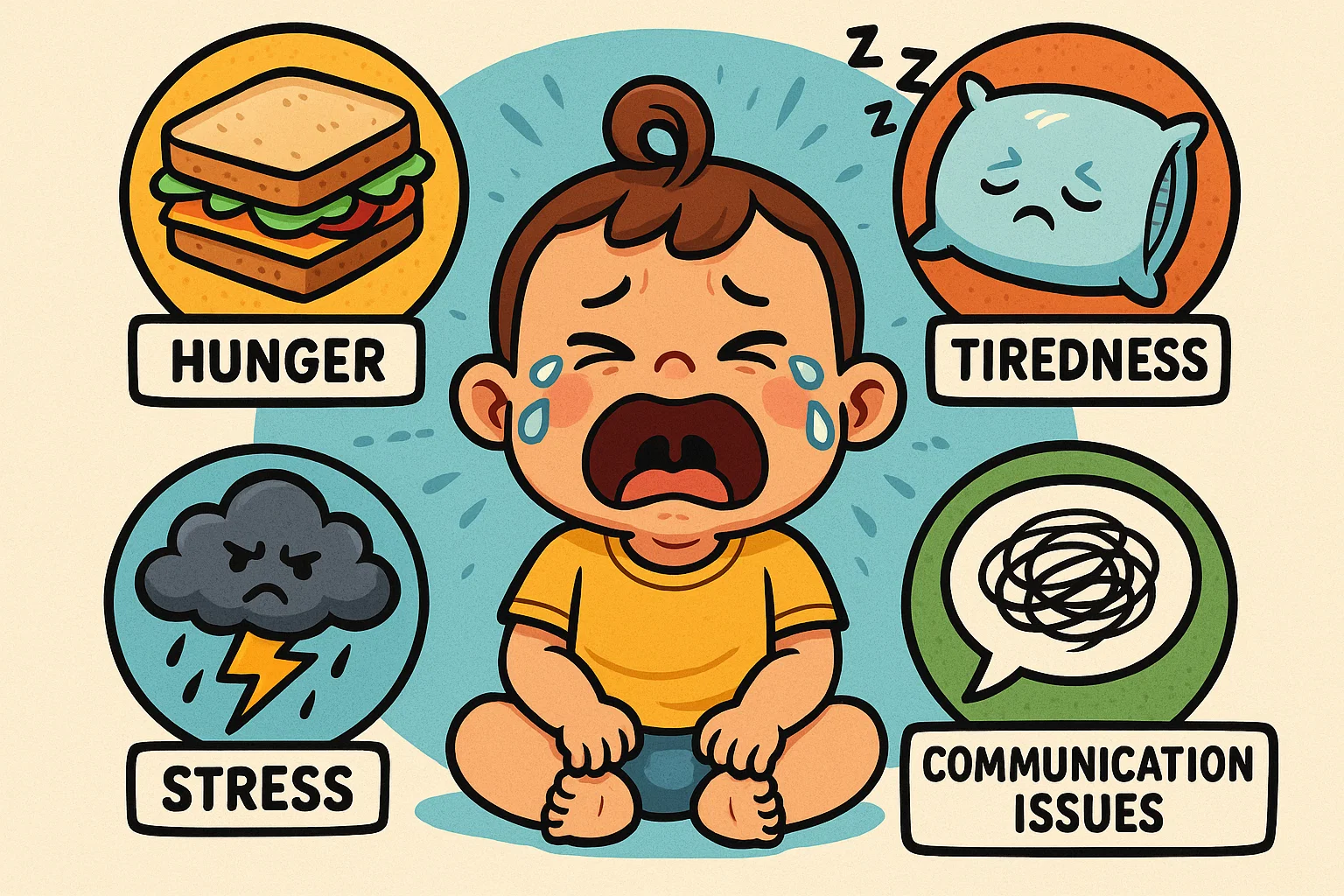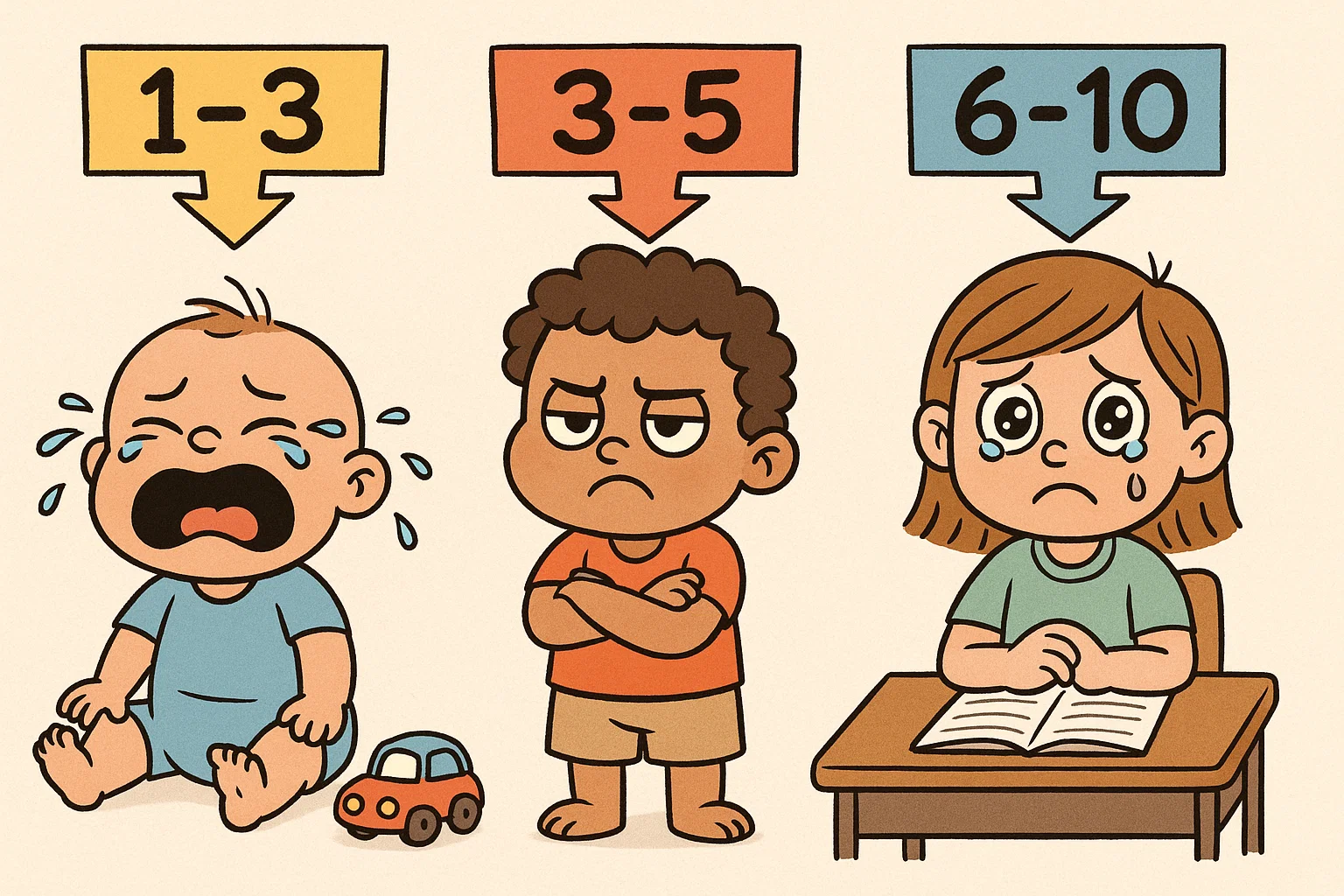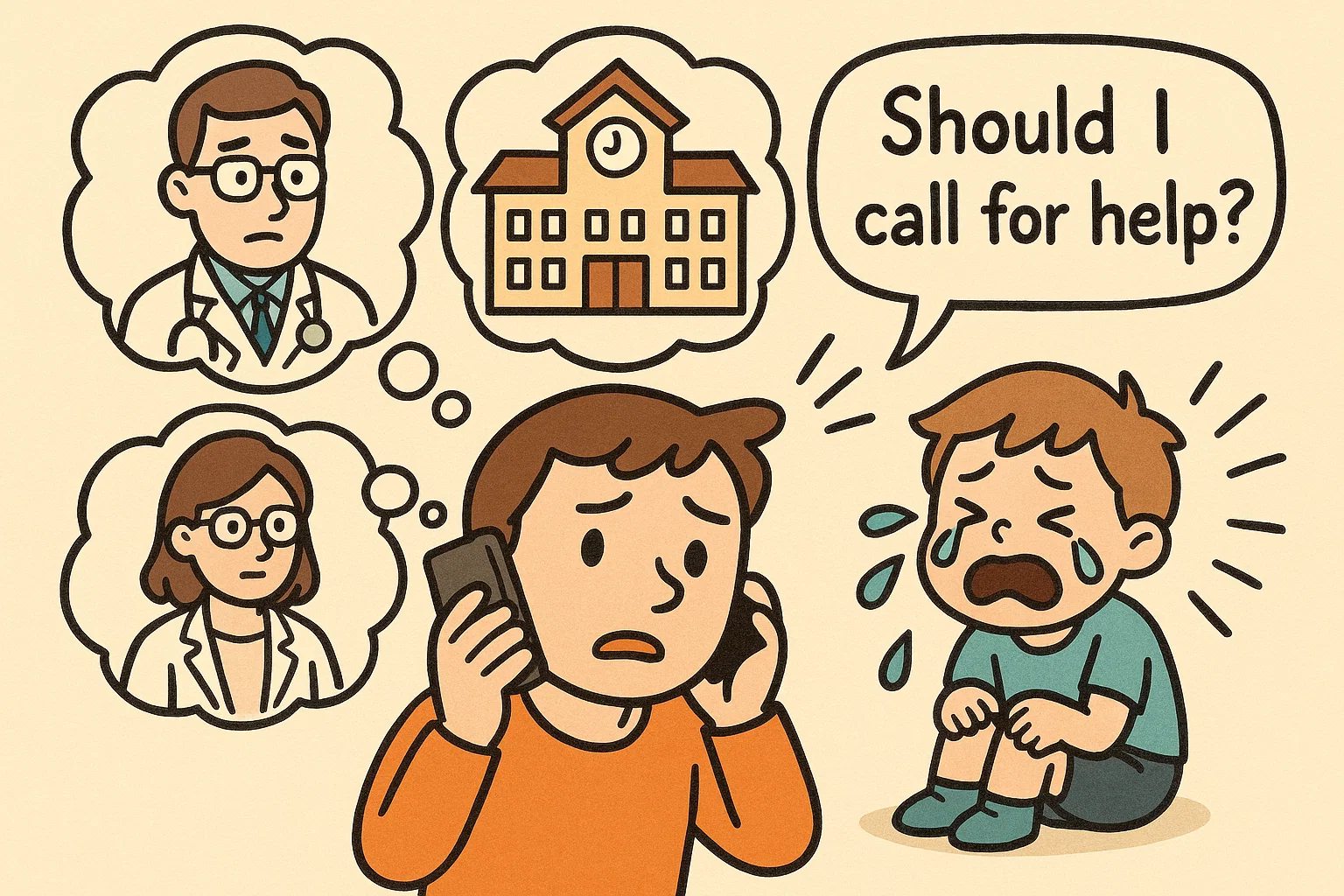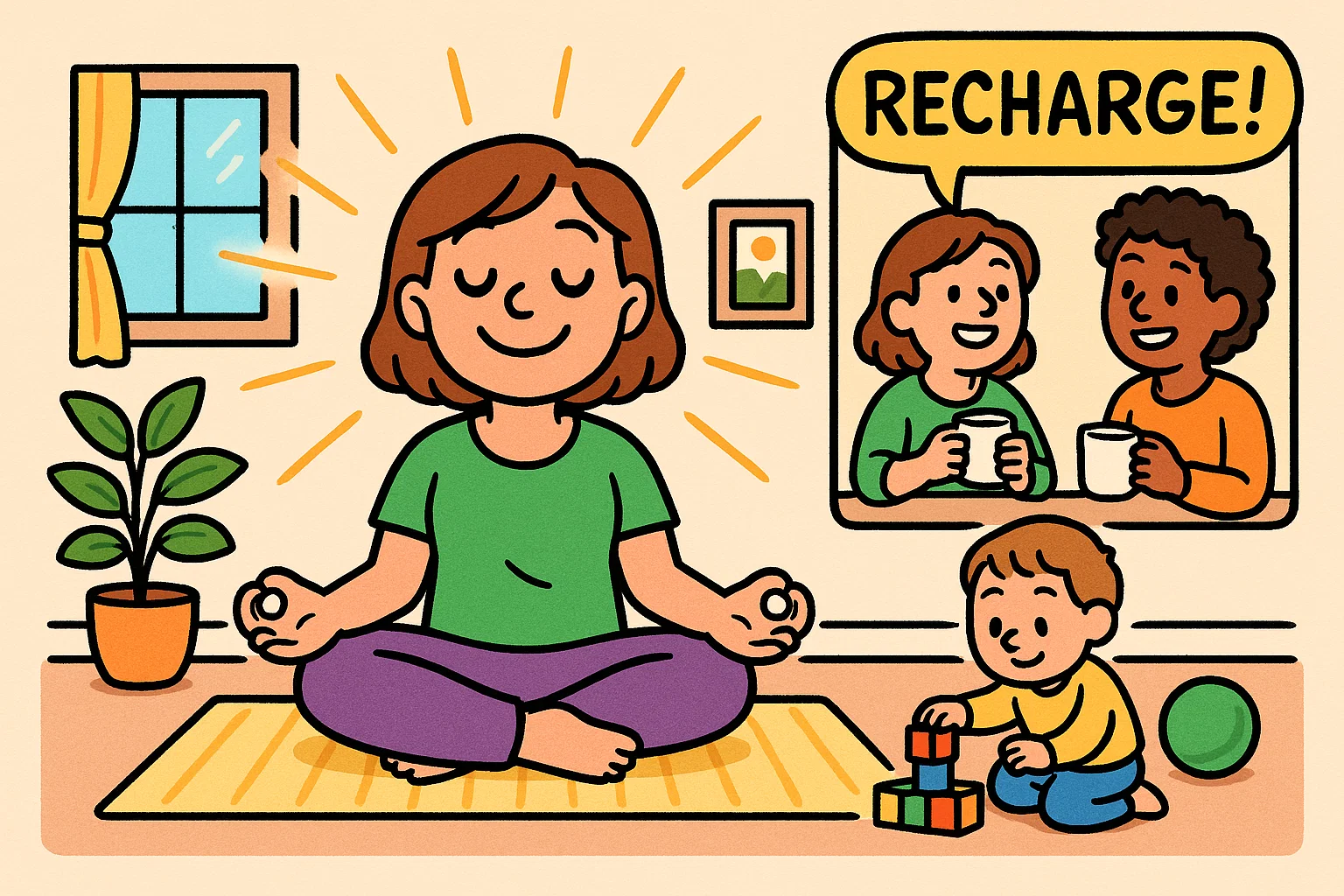How to Deal With a Child That Cries Over Everything

Do you feel like you’re constantly saying, “Don’t cry over every little thing”? You’re not alone. It can be incredibly frustrating and exhausting when your child seems to cry all the time, whether it’s over a broken toy, a small scrape, or a change in routine. This constant crying can leave you feeling helpless, questioning whether you’re doing something wrong or if your child will ever learn to manage their emotions.
As a parent or caregiver, it’s easy to feel overwhelmed, but it’s important to remember that a child who cries often isn’t being difficult on purpose. This persistent crying is often a sign that your child is struggling to navigate big feelings. The good news is that you can help your child learn to cope. By understanding the reasons behind their tears and using the right strategies, you can help them build the emotional regulation skills they need to become resilient, confident individuals.
Why a Child Cries Over Everything

When a child is constantly crying, it’s not always a tantrum. It’s their way of communicating a need. While it might seem like they cry over small things, the reasons are often much deeper. Understanding these triggers is the first step toward helping them cope.
Emotional Sensitivity and Temperament
Some children are simply born with a more sensitive temperament. Psychologists and child development experts often refer to these children as highly sensitive children (HSC). These children cry more often than others because they process emotions and sensory input more deeply. For them, a loud noise, a scratchy tag on their shirt, or a change in plans can feel like a major event.
According to researchers who introduced the concept of sensory processing sensitivity, approximately 15–20% of the population—children included—fall into the category of highly sensitive individuals. This figure is supported by a comprehensive review on highly sensitive children, which emphasizes raising awareness of SPS traits among parents and educators. This isn’t a disorder or a bad trait; it’s a personality characteristic. These sensitive kids often show high levels of empathy, a strong intuition, and a rich inner life, but they can also be more prone to crying when they feel overwhelmed.
Physical Needs and Discomfort
Sometimes, the simplest explanation is the right one. A child who cries over everything may be doing so because of an unmet physical need. Think about how you feel when you’re “hangry” or exhausted—your patience wears thin, and small annoyances become big problems. The same is true for children, especially a toddler that cries a lot.
Common physical triggers include:
- Hunger or thirst: Low blood sugar can make a child feel irritable and emotional.
- Fatigue: An overtired child lacks the emotional reserves to deal with frustration or disappointment.
- Illness or pain: A child may not be able to articulate that their stomach hurts or they have a headache, so they express their discomfort through tears.
- Sensory overstimulation: Bright lights, loud noises, or a busy environment can overwhelm a sensitive child, leading to a meltdown. This can be a sign of a sensory processing disorder, which may require professional help.
Communication Difficulties
A child’s verbal skills develop much slower than their emotional understanding. A 2-year-old might know exactly what they want but lack the vocabulary to express it. This frustration can quickly turn into tears. For a young child, crying is a powerful, universal form of communication. It signals, “I need something, and I don’t have the words to tell you what it is!” This is a key reason why a child may cry over everything during their toddler years. As their language skills grow, you will likely see the frequency of crying decrease.
Stress, Anxiety, or Changes
Even for a child, life can be stressful. Major changes like a new sibling, a move, or starting a new school can disrupt their sense of security. Additionally, a child who seems to cry over everything might be struggling with anxiety or fear. For example, a 6-year-old may be worried about making friends at a new school and expresses that anxiety by crying when it’s time to get ready in the morning.
In some cases, persistent crying may also be an early sign of a mental health condition, such as depression or an anxiety disorder. In these cases, the crying is often accompanied by other symptoms like changes in sleep patterns, loss of interest in activities they once enjoyed, or withdrawal from social interactions.
What to Do When a Child Cries Frequently
When a child is crying and screaming, it’s a natural instinct to want to make it stop. However, the goal shouldn’t be to simply stop crying but to teach them coping skills. Here are some actionable strategies to help your child learn how to handle their big feelings.
Validate Feelings With Empathy
This is perhaps the most crucial step. When a child is crying over little things, your first instinct might be to say, “It’s not a big deal.” But to your child, it is a big deal. Validating their feelings doesn’t mean you agree with their reaction; it means you acknowledge their emotion. When you say, “I see you’re really sad that the tower fell down,” you help them feel seen and understood. This simple act can de-escalate the situation faster than trying to rationalize with them.
Here’s how validation works:
- Acknowledge and Name the Emotion: “You seem angry that you have to turn off the TV.”
- Connect the Emotion to the Event: “I know it’s frustrating when your brother takes your toy.”
- Show Empathy: “It’s okay to feel sad about that.”
By doing this, you’re not just helping them calm down; you’re also teaching them to identify and name their own emotions, which is a foundational skill for emotional regulation.
Address Basic Needs First
Before you dive into deep emotional conversations, do a quick check-in. This is especially important for a younger toddler that cries about everything.
Use a checklist like this:
| Possible Cause | What to Check |
| Hunger | When did they last eat? Offer a small, healthy snack. |
| Fatigue | How long since their last nap or bedtime? Suggest a quiet activity or rest. |
| Overstimulation | Is the environment too loud, bright, or chaotic? Move to a calmer, quieter space. |
| Pain | Are they complaining of a tummy ache or headache? Check for scrapes or other injuries. |
Often, meeting these basic needs is all it takes to help them calm down.
Teach Emotional Regulation Skills
Crying is an emotional release, but it’s not a long-term solution. A child needs to learn how to manage their emotions. Here are some age-appropriate techniques:
- Deep Breaths: Teach your child to take a few deep breaths together. You can make it a game by pretending to be a dragon breathing fire or a balloon inflating and deflating. This simple act activates the body’s calming response.
- Create a “Calm Corner”: Set up a quiet space with pillows, blankets, books, and sensory toys. When your child is feeling overwhelmed, you can guide them to this spot to help them cope.
- Use Visuals: For a young child who cries a lot, use emotion charts or pictures to help them point out how they feel. This can bridge the gap in their communication skills.
- Problem-Solving: Once they are calm, help them think about what they can do differently next time. For example, “What could we do if your tower falls down again? Maybe we can build it on the floor instead of the table.”
Maintain Consistent Boundaries
While you should always be compassionate, it’s also important to have consistent boundaries. A child needs to understand that crying won’t always get them what they want, especially if the request isn’t reasonable. For instance, if you’ve already said they can’t have another cookie, a tantrum won’t change that. Stay calm, acknowledge their frustration, and hold firm on the boundary. This teaches them that while their feelings are valid, their behavior still needs to be managed.
Offer Comfort and Reassurance
Physical touch, like a hug, can be incredibly powerful. It releases oxytocin, the “cuddle hormone,” which helps reduce stress. When a child is crying, offering a hug or simply sitting close to them can help them feel safe and supported. This is particularly effective for a highly sensitive child. Your presence alone can be a powerful anchor in their emotional storm.
Helping Different Age Groups Cope With Crying

A 2-year-old’s tears are different from a 6-year-old’s. The strategies you use should evolve as your child grows and develops new skills.
Toddlers (1–3 Years)
This stage is often the peak period for tantrums and frustration. Toddlers often cry about everything because their world is full of new, confusing experiences.
- Focus on Redirection: Their attention spans are short. Redirect them to a different activity or toy to change their focus.
- Use Simple Language: Keep your explanations short and clear. Use gestures and simple phrases like “No, thank you” or “It’s time for bed.”
- Offer Choices: Give them a sense of control. For example, “Do you want to put your shoes on first, or your coat?”
Preschoolers (3–5 Years)
At this age, children are starting to understand emotions and can talk about them more.
- Encourage Self-Soothing: Teach them to take a few deep breaths or hug a stuffed animal when they’re upset.
- Use “Feeling Words”: Help them expand their emotional vocabulary. Instead of just “mad,” introduce words like “frustrated,” “disappointed,” or “jealous.”
- Narrate Their Emotions: “I see that you’re angry because you can’t go to the park right now. It’s frustrating when plans change.”
Children (6–10 Years)
This age group is learning to solve problems and negotiate.
- Ask Open-Ended Questions: Once they’re calm, ask, “What made you feel so sad?” or “What do you think we can do about this?”
- Model Problem-Solving: Talk through your own frustrations out loud. “I’m so frustrated with this traffic. I’m going to take a few deep breaths to stay calm.”
- Respect Their Independence: Acknowledge that they want to solve things on their own but let them know you’re always there to help.
Potential Problems If Crying Is Ignored
When a child is constantly crying, it’s easy for parents to become numb to it or to simply dismiss it. However, ignoring a child’s feelings can have serious long-term consequences.
Low Self-Esteem and Insecurity
When a child’s crying is consistently met with dismissal (“Stop being a baby,” “You’re fine”), they learn that their emotions are not valid. Over time, this can lead to low self-esteem and a belief that they are not worthy of care and attention. They may feel ashamed of their own feelings and struggle with insecurity.
Anxiety and Stress Buildup
A child who is not given the tools to manage their emotions will internalize them. This can lead to a buildup of stress and anxiety, which may manifest as physical symptoms like stomach aches or headaches, or as increased irritability and moodiness. A child struggles when they don’t know how to handle these big emotions.
Behavioral Issues at Home or School
A child who is unable to communicate their feelings effectively may resort to negative behaviors. This can include acting out, becoming withdrawn, or having frequent outbursts at school. They may feel that these behaviors are the only way to get the attention or help they need.
When to Seek Professional Help

While a child that cries over everything is often a normal part of development, there are times when it’s a sign of a deeper issue. You should consider seeking professional help if:
Persistent Crying with No Clear Cause
If your child is constantly crying for no apparent reason, or if their crying episodes are daily and prolonged, it may be time to consult a professional. This persistent crying can be a warning sign of an underlying issue.
Interference with School or Social Life
If a child’s frequent crying is affecting their ability to make and keep friends, or if it’s impacting their performance in school, it’s a good idea to speak with a pediatrician or child psychologist. A child may struggle with friendships or academics if they don’t know how to manage their emotions.
Signs of Anxiety or Depression
Look for other signs that may accompany the excessive crying, such as:
- Difficulty sleeping or nightmares
- Loss of interest in activities they used to enjoy
- Social withdrawal
- Changes in appetite
- Persistent sadness or hopelessness
If you notice these signs, it’s crucial to seek professional help. A pediatrician can rule out any physical causes and may refer you to a child psychologist who can provide an evaluation and offer strategies to help them cope.
Phrases to Say When a Child is Crying
Knowing what to say in the moment can make all the difference. Instead of trying to “fix” the problem, use phrases that help your child feel heard and supported.
“I see you’re upset, I’m here with you.”
This phrase validates their feelings without judgment. It lets them know that you see their pain and that they are not alone. It offers comfort and reassures them that you are a safe person to turn to.
“Let’s take a deep breath together.”
This simple prompt helps your child learn to use their breath as a tool for emotional regulation. It’s a simple, actionable step that you can do together, creating a sense of teamwork.
“It’s okay to feel sad, let’s find a way to solve this.”
This acknowledges the emotion and then shifts the focus to problem-solving. It teaches them that while it’s normal to feel sad or angry, there are also things they can do to make the situation better.
“I know this is hard, but we’ll get through it together.”
This phrase is a powerful reminder of your unwavering support. It builds resilience and a sense of partnership, helping your child feel strong enough to face their challenges.
Looking After Yourself As a Parent

Helping a child who seems to cry over everything is an emotional marathon, not a sprint. It’s draining, and if you don’t take care of yourself, you risk burnout.
Stay Calm and Model Emotional Control
When your child is having a meltdown, the best thing you can do is stay calm. Children mirror their parents’ emotions. If you react with anger or frustration, you’ll only escalate the situation. By modeling calmness, you show them how to handle big feelings in a healthy way.
Build a Support Network
You don’t have to do this alone. Lean on your partner, family, or friends. Talking to other parents and caregivers who have been through similar experiences can be incredibly validating. A support network can provide a much-needed break or just a listening ear.
Avoid Guilt and Burnout
It’s easy to feel like a failure when your child is constantly crying. Remind yourself that you’re doing your best. It’s okay to feel stressed or overwhelmed. Prioritize your well-being by taking short breaks, engaging in a hobby you enjoy, or simply going for a walk. You cannot pour from an empty cup.
Key Takeaways for Parents
Navigating the world with a sensitive child who cries about everything can be a challenge, but it’s also an opportunity to build a stronger, more connected relationship.
Crying Is a Form of Communication
Your child isn’t trying to manipulate you. They are using the tools they have to tell you they need help. By viewing their tears as communication, you can respond with curiosity and empathy instead of frustration.
Responding With Empathy Reduces Episodes
A child’s crying episodes don’t always need to be a battle. By validating their feelings and teaching them coping strategies, you can reduce the frequency and intensity of their outbursts. When a child learns they can trust you to help them manage their emotions, they become more resilient.
Teaching Emotional Skills Builds Resilience
The ultimate goal isn’t to stop your child from ever crying again. It’s about helping them learn to manage their emotions in a healthy way. This is a crucial life skill that will serve them well into adulthood. You are helping them become a confident, capable person who knows how to deal with their emotions.
Support and Consistency Make the Difference
Helping a child learn to manage their emotions is a long-term process. It requires patience, consistency, and a lot of love. Every child is different, but with your support and guidance, they can and will learn to navigate their feelings.
